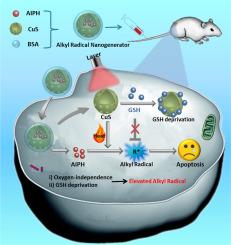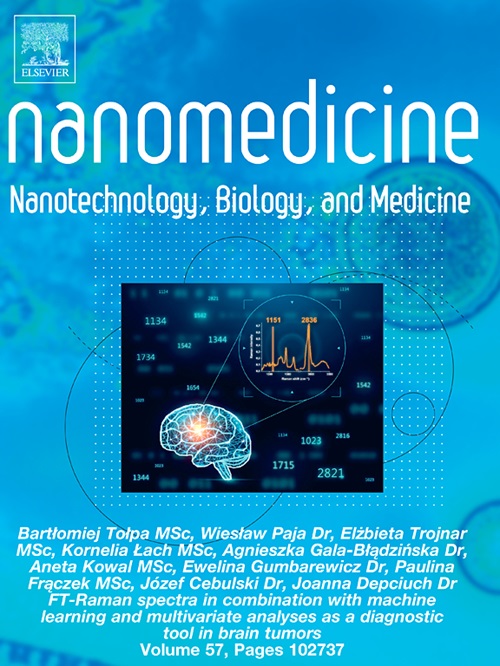Oxygen-independent alkyl radical nanogenerator enhances breast cancer therapy
Abstract
The hypoxic microenvironment of breast cancer substantially reduces oxygen-dependent free radical generation. Overexpression of glutathione (GSH) in tumor cells mitigates the impact of free radical generation. In this study, we designed and developed an oxygen-independent alkyl radical nanogenerator (copper monosulfide/2,2′-azabis(2-imidazoline) dihydrochloride@bovine serum albumin; CuS/AIPH@BSA) with spatiotemporally controlled properties and GSH consumption to enhance breast cancer therapy. We encapsulated the alkyl radical initiator, AIPH, in hollow mesoporous CuS nanoparticles with photothermal conversion effect and enveloped them in BSA. AIPH was released and decomposed to generate alkyl radicals in hypoxic breast cancer with the photothermal conversion effect of CuS under near-infrared laser irradiation. CuS consumed high GSH levels in tumor cells because it could form complex with GSH and thereby enhanced free radical treatment. In vivo and in vitro assays demonstrated the anti-tumor efficacy of the rationally designed free-radical nanogenerator in hypoxic microenvironment of breast cancer without showing systemic toxicity.

| 公司名称 | 产品信息 | 采购帮参考价格 |
|---|---|---|
| 上海源叶 |
2,2a?2-Azinobis (3-ethylbenzothiazoline-6-sulfonic acid ammonium salt) (ABTS)
|
¥44.00~¥18256.00 |
| 索莱宝 |
Cell culture medium (Roswell Park Memorial Institute; RPMI 1640)
|
|
| 索莱宝 |
Reduced GSH assay kit
|
|
| 麦克林 |
2,2a?2-azabis(2-imidazoline) dihydrochloride (AIPH)
|

 求助内容:
求助内容: 应助结果提醒方式:
应助结果提醒方式:


